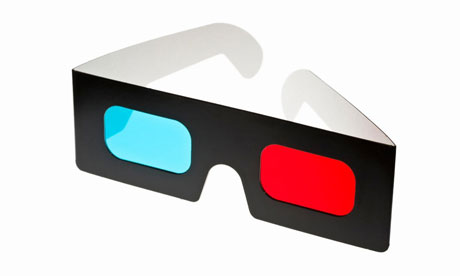 04.14.2011, 07:15 AM
04.14.2011, 07:15 AM
|
#1
|
|
invito al cielo
Join Date: Jun 2008
Posts: 7,570
|
Quote:
Will Peter Jackson's The Hobbit change cinema for ever?
The Lord of the Rings director is shooting his new film at 48 frames per second – twice as fast as the industry standard-
 A still from Peter Jackson’s old-fashioned 24fps film The Lord Of The Rings: The Return Of The King Photograph: New Line Productions A still from Peter Jackson’s old-fashioned 24fps film The Lord Of The Rings: The Return Of The King Photograph: New Line Productions
The cinema, said Jean-Luc Godard, is truth, 24 times per second. That's not truthful enough for some people. This week, Peter Jackson announced that he is shooting his new version of The Hobbit at 48 frames per second, a massively more expensive process that captures movement and detail with far greater accuracy. In his blog, Jackson says that we have tolerated the sprockety old 24fps speed for far too long, and this is like "the moment when vinyl records were supplanted by digital CDs". Jackson calls for cinemas worldwide to switch over to 48fps projection speeds to show his Hobbit, which is of course in 3D; he dismisses "purists" unhappy at the consequent textural loss of blur and strobing – comparable, perhaps, to art historians who lament the cleaning of an Old Master canvas, which removes its grainy, characterful darkness.
Are we witnessing that most unreliable phenomenon: the game-changer? Higher frame-rates have been mooted before, but like Imax and 3D, they have been used for theme-park displays: the economics of mass cinema distribution have made them untenable. But now Jackson is pushing hard for 48fps as the new gold standard. Is there no turning back? Will this be the future of cinema? It's difficult to tell. When Avatar came out, 3D was the coming thing, 2D was yesterdaysville. And yet the business has been relying on DVD sales, downloads and home entertainment. Can Avatar and the new 3D generation play as well on TV and computer screens? Last month there were worrying signs that even on the big screen, 3D hasn't cured all ills. Ticket sales are down. 3D flops such as Mars Needs Moms haven't helped. And people are still stubbornly unhappy about the dimming effect created by those hi-tech new specs.
So how do we know when the game changes? When the talkies came in with The Jazz Singer, it changed in a big way. Silents were out. Many thought the same about radio when television came in: and yet radio survived and prospered. As for 48fps, Peter Jackson is almost certainly right when he says it's a cleaner, truer watch. But will the difficult economics of the movie business permit its widespread introduction? As Al Jolson might have said – we don't know nothin' yet.
|
Quote:
James Cameron expects 100% 3D within the next five years
All film and TV will be made in 3D soon, says Avatar director as he launches venture promoting industry take-up of technology
-
 Outdated ... soon, says James Cameron, we won't need these to view 3D films or TV. Photograph: Alamy Outdated ... soon, says James Cameron, we won't need these to view 3D films or TV. Photograph: Alamy
Every cinema will be capable of showing 3D films within five years, James Cameron said yesterday at the launch of a new venture which aims to make the technology ubiquitous on both the big and small screen.
The Cameron-Pace Group, which utilises technology developed for the film Avatar, aims to encourage film-makers, broadcasters and games manufacturers to embrace the brave new world of stereoscope. Cameron has partnered with Vince Pace, with whom he worked on the Fusion 3D camera system.
"Our strategic plan is to make 3D ubiquitous over the next five to 10 years on all platforms," Cameron told the Hollywood Reporter. He said he expected to see 100% adoption of the technology in cinemas within three to five years, as well as rapid expansion of the home market.
"We are shifting from having to create 50-70 (camera systems) for movies to thousands of rigs that need to be got out there for the rapidly growing broadcasting business," said Cameron. With 3D TVs already available for the home and TV channels broadcasting in stereoscope, the film-maker said there was a "content gap" which the new venture hoped to help fill.
"Broadcasting is the future of 3D," Cameron said during a keynote speech at the National Association of Broadcasters Show in Las Vegas yesterday. "In two years, everything will be produced in 3D and 2D versions will be extracted from that."
The Terminator director added that 3D in the home would really take off once new technology emerged which meant that viewers did not have to wear glasses. The adoption curve "is going to go ballistic" said Cameron.
Some reports last year seized on box-office data suggesting the number of people preferring to see a film in 3D had dropped dramatically as evidence that the boom might be nearing its end. Hollywood studios have scoffed at the notion, however, and with three out of the top five films at the global box office last year having been screened in stereoscope, naysayers may be waiting a while for the fad to fizzle out.
|
http://www.guardian.co.uk/film/2011/...inema-director
http://www.guardian.co.uk/film/2011/...ameron-3d-film |

|
|QUOTE AND REPLY|
|